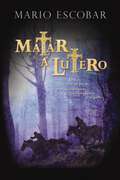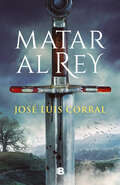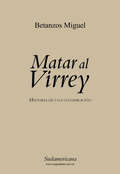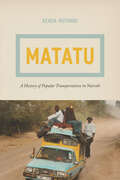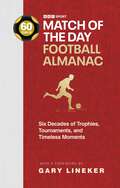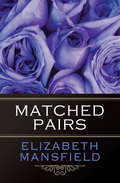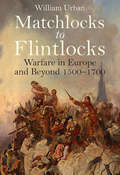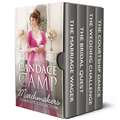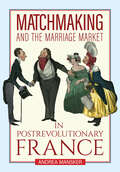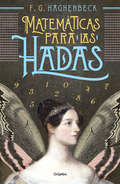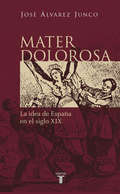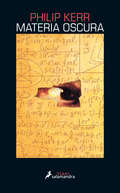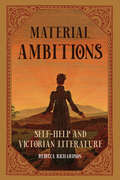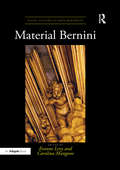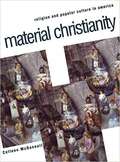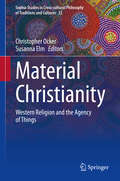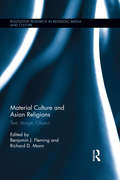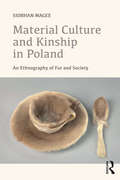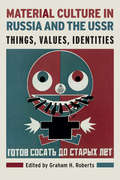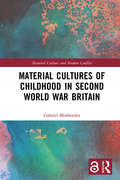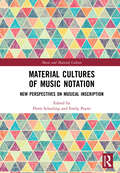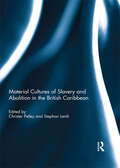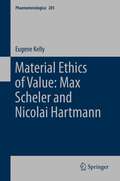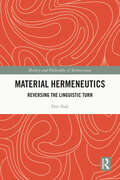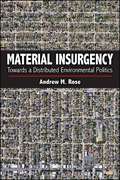- Table View
- List View
Matar a Lutero
by Mario Escobar"Temo más lo que está dentro de mí, que lo que viene de fuera".--Martín LuteroUn cuento apasionante de Martín Lutero de las mismas páginas de la historia.Era medianoche cuando el grupo de caballeros abandonó la ciudad. Los cascos de los caballos repiquetearon en el empedrado de sus calles hasta atravesar el Rin, la antigua frontera entre el civilizado mundo de Roma y los bárbaros. No habían tenido tiempo para recoger el equipaje, tan grave era la amenaza que se cernía sobre el protegido del príncipe Federico de Sajonia, y no había tiempo que perder. El grupo era reducido, sólo tres escoltas y el propio Lutero que cabalgaba torpemente sobre el caballo, poco acostumbrado a montar. El pobre monje se esforzaba por no retrasar el paso de su escolta. Mientras los fugitivos recorrían los campos próximos a la ciudad, sus habitaciones eran registradas por soldados del emperador Carlos. El capitán Felipe Diego de Mendoza se quejó: «Alguien les ha advertido, ahora tendremos que seguirlos por toda Alemania».
Matar al rey
by José Luis CorralEL PODER ESTÁ EN LA SANGRE «JUEGO DE TRONOS NO ES NADA COMPARADO CON LAS INTRIGAS Y LA VIOLENCIA DE LA CASTILLA DEL SIGLO XIV».JOSÉ LUIS CORRAL 1312. Ríos de sangre corren por el reino de Castilla y León tras la muerte de Fernando IV, cuando su hijo y heredero, Alfonso XI, tiene apenas un año. Mientras nobles y miembros de la corte libran una terrible lucha por hacerse con el trono, solo María de Molina y Constanza de Portugal, abuela y madre de Alfonso, lo protegerán y urdirán una compleja trama de intrigas y alianzas para conservar la corona que todos ambicionan. Esta novela da comienzo a una bilogía en la que el reputado medievalista y escritor José Luis Corral aborda los reinados de Alfonso XI el Justiciero, y el de su hijo Pedro I de Castilla el Cruel. Amores prohibidos, pactos envenenados, sed de justicia y hombres despiadados dan vida a esta narración fascinante. Matar al rey captura, con una potencia narrativa desbordante, el espíritu del siglo más sangriento y cruel de la historia de España.
Matar al virrey
by Miguel BetanzosUna apasionante novela histórica sobre le época del virreinato. A fines del siglo XVIII el joven Augusto Velazco, protagonista de esta novela, se une a un grupo de conspiradores que confabulan contra las autoridades coloniales. Por las sospechas sobre sus actividades, Augusto sufrirá un prolongado exilio en la Colonia del Sacramento; allí empieza a pensar que la única salida posible es atentar contra la vida del virrey Arredondo. Un relato intenso y apasionado que describe el ambiente social y cultural de las ciudades virreinales y la época previa a la independencia americana.
Matatu: A History of Popular Transportation in Nairobi
by Kenda MutongiDrive the streets of Nairobi, and you are sure to see many matatus—colorful minibuses that transport huge numbers of people around the city. Once ramshackle affairs held together with duct tape and wire, matatus today are name-brand vehicles maxed out with aftermarket detailing. They can be stately black or extravagantly colored, sporting names, slogans, or entire tableaus, with airbrushed portraits of everyone from Kanye West to Barack Obama. In this richly interdisciplinary book, Kenda Mutongi explores the history of the matatu from the 1960s to the present. As Mutongi shows, matatus offer a window onto the socioeconomic and political conditions of late-twentieth-century Africa. In their diversity of idiosyncratic designs, they reflect multiple and divergent aspects of Kenyan life—including, for example, rapid urbanization, organized crime, entrepreneurship, social insecurity, the transition to democracy, and popular culture—at once embodying Kenya’s staggering social problems as well as the bright promises of its future. Offering a shining model of interdisciplinary analysis, Mutongi mixes historical, ethnographic, literary, linguistic, and economic approaches to tell the story of the matatu and explore the entrepreneurial aesthetics of the postcolonial world.
Match of the Day Football Almanac: Six Decades of Trophies, Tournaments, and Timeless Moments
by Nick ConstableDo you remember the Battle of Old Trafford? Shearer's dream debut hat trick? Or how many goals Haaland scored in his first Premier League season? Hope, heartbreak and victory, over the past 60 years Match of the Day has shown it all.From bombastic debuts in August to May’s nail-biting end-of-season title races, the football calendar is filled with legendary moments. Packed full of stories from 60 years of football history, The official Match of the Day Football Almanac is your ultimate guide to the highs and lows of the football season.With a foreword from Gary Lineker and featuring the most legendary footballing stories from the last 60 years of Match of the Day, this month-by-month guide includes giant-killing FA Cup battles, the birth of the Premier League and the dawn of VAR, all culminating in legendary World Cup and Euros tournaments – with stats and insights from the experts at Match of the Day along the way. This is the perfect gift for any football fan, and a fitting tribute to our favourite football programme.
Matched Pairs
by Elizabeth MansfieldChildhood friends team up to disarrange their impending marriage in this charming Regency romance from the award-winning author. It was decided from their infancy that Tris Enders would wed Juliet Branscombe. Yet, growing up on adjoining estates in Derbyshire made that the last thing that either wanted, especially after Tris had found the girl of his dreams in London and the handsome Lord Canfield moved into a nearby estate. Tris and Juliet each believed that if the other became engaged to someone else, then Juliet's mother, the formidable Madge Branscombe, would finally have to put her daughter's dreams above her own and allow them to marry whomever they chose. Misunderstandings abound when Tris and Juliet "help" each other with the objects of their affections, leading to disastrous results.
Matchlocks to Flintlocks: Warfare in Europe and Beyond, 1500–1700
by William UrbanIn the early modern world three dominant cultures of war were shaped by a synergy of their internal and external interactions. One was Latin Christian western Europe. Another was Ottoman Islam. The third, no less vital for so often being overlooked, was eastcentral Europe: Poland/Lithuania, Livonia, Russia, the freebooting Cossacks, a volatile mix of variations on a general Christian theme.William Urbans fascinating narrative is an integrated account of early modern war at the sharp end: of campaigns and battles, soldiers and generals. Temporally it extends from the French invasion of Italy in 1494 to Austrias Balkan victories culminating in the 1718 Treaty of Peterwardein. Geographically it covers ground from the Low Countries to the depths of the Ukraine.That narrative in turn focuses Urbans major analytical points: the replacement of crowd armies by professionals, and the professionals integration into crown armies: government-supervised, bureaucratized institutions. The key to this process was the mercenary. Originally recruited because the obligations of feudal levies were too limited, mercenary forces evolved operationally into skilled users of an increasingly complex gunpowder technology in ever more complex tactical situations. By the end of the seventeenth century, soldiers were identifying with the states and the rulers they served.
Matchmakers Complete Collection: An Anthology
by Candace CampEnjoy the fan-favorite Matchmakers series from New York Times bestselling author Candace Camp, collected here!In this collection:The Marriage Wager Miss Constance Woodley can scarcely imagine why one of the leading lights of London society should take an interest in the likes of her. But nonetheless, she catches the eye of the handsome, charming and ever-so-slightly notorious Lord Dominic Leighton. And soon, the pair will show the entire ton that even in the heartless world of the marriage mart, when love is at stake, all bets are off.Originally published in 2007.The Bridal Quest (2008)Lady Irene Wyngate isn’t attracted to Gideon, long-lost heir to the Earl of Radbourne—or so she says, when matchmaker Francesca Haughston asks for her help to civilize him for marriage. After all, he is a true rogue with a dubious past. A handsome rogue, she has to admit, but as she reluctantly begins to yield to love, wicked family secrets come to light…with devastating consequences for the reluctant lovers.Originally published in 2008.The Wedding ChallengeLady Calandra should have suitors beating down her door. But her overprotective brother, the Duke of Rochford, has managed to scare off every suitable gentleman. Every man except the mysterious Earl of Bromwell, that is. Callie finds herself drawn to the enigmatic earl, despite her brother’s protestations. But when shadowy secrets about the duke and the earl come to light, it may be too late for Callie to see that she’s walked straight into a trap.Originally published in 2008.The Courtship DanceLady Francesca Haughston has given up on romance for herself, finding passion instead in making desirable matches for others. So it seems only fair, when she learns she’d been deceived into breaking her own long-ago engagement to Sinclair, Duke of Rochford, that she now help him find the perfect wife. Francesca is certain any spark of passion between them has long since died. But soon Francesca finds his lessons in love scandalously irresistible—and a temptation that could endanger them both.Originally published in 2009.
Matchmaking and the Marriage Market in Postrevolutionary France
by Andrea ManskerMatchmaking and the Marriage Market in Postrevolutionary France uncovers the unexplored history of matrimonial agents, their novel marketing tactics, and the rise of personal advertisements to track the commercialization of marriage in nineteenth-century France. Brokers transformed courtship and marriage into forms of commercial exchange, linking them to the burgeoning urban values of abundance, pleasure, and social mobility. By studying agents' and readers' media fictions on love alongside court cases, legislation, and literature surrounding the industry, Andrea Mansker reveals the intimate and socioeconomic pressures of finding a spouse. At the same time, she demonstrates how contemporaries used the business of matrimony to reimagine their public identities, relationships, and courtship rituals following unprecedented historical change due to the French Revolution and Napoleonic wars. The matchmaking business both responded to and helped shape national anxieties over fluctuating nuptial rates and changing laws on marriage and divorce. As a result, marriage itself was reconceived as a commercial contract inseparable from the atomistic and corrupt marketplace. The debates and pressures Mansker describes in Matchmaking and the Marriage Market in Postrevolutionary France are still relevant today. As contemporary online daters likely understand, the possibility of finding a mate in an expanded pool of candidates beyond one's family, locality, and nation offered individuals the liberating opportunity to explore new personas just as it produced a novel sense of danger about these impersonal transactions in the anonymous marketplace.
Matemáticas para las hadas
by F. G. HaghenbeckÉsta es la historia de una mujer excepcional, Ada Byron, que se sentía más cómoda entre números, hadas y faunos, que en el ajustado corsé de la realidad cotidiana. F. G. Haghenbeck nos presenta el fascinante retrato de este personaje complejo, vibrante y poco conocido. Con un estilo ágil y preciso nos introduce en el mundo de una mente maravillosa, capaz de conjugar el rigor del pensamiento matemático con la creatividad mágica y poética. Matemáticas para las hadas es una novela sobre la pasión de una mujer, ese sentimiento que descubrimos en cada faceta de la vida. En especial, en los números que rigen nuestro mundo lleno de misterios. Es la vida de una de las mujeres más maravillosas de la época moderna, la hija del poeta Lord Byron: Ada Byron, parte de la realeza inglesa y brillante genio en matemáticas que diseñó los programas para la primera computadora de la historia. Pero es también la narración de una mujer tormentosa del siglo XIX, con una relación intensa con sus famosos padres, amante de Charles Dickens y del ludópata John Crosse, que vivió una vida llena de momentos dramáticos. Todas estas historias tejen la vida de Ada Augusta Byron, condesa de Lovelace: La Encantadora de Números. La crítica ha opinado: "Haghenbeck es un autor cuidadoso, limpio y calculador; tiene sentido del espacio, del tiempo y del alcance de sus personajes [...]. Leer es apostar, y aquí les presento un buen reto. ¿Cuánto le van a meter?" -Elmer Mendoza- "Es una de esas lecturas mágicas que te entristece a medida que las vas acabando al pensar que ya nunca podrás volver a pasear por sus páginas con esa inocencia de la primera vez." -Esquire (España)-
Mater dolorosa
by José Álvarez JuncoJosé Álvarez Junco analiza en esta obra el proceso de construcción de la identidad española a lo largo del siglo XIX. «Álvarez Junco ha escrito un libro definitivo.»Javier Tusell La idea de España, previamente formada alrededor de la monarquía y el catolicismo, se vio afianzada a principios de la edad contemporánea con la llamada «guerra de independencia» contra los franceses, y las elites intelectuales emprendieron a continuación su construcción cultural en términos que se adaptaban a la era de las naciones. Sin embargo, esta tarea se vio obstaculizada muy pronto a causa de la continua inestabilidad política, el atraso económico, la pérdida del imperio y la inexistencia de amenazas exteriores. A estos factores se añadieron, además, la carencia de un sistema educativo y un servicio militar verdaderamente nacionales, aparte de los interminablesdebates en que se enzarzaron liberales y conservadores sobre el sentido y la orientación política de la identidad española. La derrota en la guerra cubana de 1898, que cerró el siglo, provocó una última crisis de identidad, de la que surgieron los proyectos nacionalistas alternativos. Reseñas:«Álvarez Junco es un historiador que ha abordado, y siempre con maestría, algunos fenómenos esenciales de la historia española: el anarquismo, el populismo, el nacionalismo y la relación entre visión del pasado y construcción de identidad.»José Andrés Rojo, Babelia «Este libro es un buen instrumento para conocer en profundidad los antecedentes históricos de muchos de los problemas actuales.»Rogelio López Blanco, El Cultural de El Mundo «Un espléndido libro sobre el nacimiento del nacionalismo español en el siglo XIX.»Luis Berenguer, El País «Mater Dolorosa señala un antes y un después, un momento de madurez necesaria por parte de un historiador con una larga trayectoria. Una contribución ejemplar y generosa.»Josep María Fradera, Revista de Libros
Materia oscura
by Philip KerrUn absorbente thriller histórico sobre política, ciencia y religión en el Londres de finales del siglo XVII por uno de los autores más icónicos del género negro. En 1696, Christopher Ellis, un impetuoso joven aficionado a los naipes y a las mujeres, es enviado a la Torre de Londres, pero no como prisionero. Gracias a un inesperado giro del destino, Ellis se convierte en el nuevo ayudante de sir Isaac Newton, el renombrado científico que es además el encargado de perseguir a los falsificadores que amenazan con derrumbar la economía inglesa. Con la aguda perspicacia de Newton y la habilidad de Ellis con la espada, la peculiar pareja de detectives se prepara para resolver el caso. Sin embargo, cuando sus pesquisas los conducen hasta un misterioso mensaje codificado sobre un cadáver escondido en la Torre de los Leones, los dos investigadores se darán cuenta de que se está urdiendo algo mucho más siniestro.
Material Ambitions: Self-Help and Victorian Literature
by Rebecca RichardsonWhat the Victorian history of self-help reveals about the myth of individualism.Stories of hardworking characters who lift themselves from rags to riches abound in the Victorian era. From the popularity of such stories, it is clear that the Victorians valorized personal ambition in ways that previous generations had not. In Material Ambitions, Rebecca Richardson explores this phenomenon in light of the under-studied reception history of Samuel Smiles's 1859 publication, Self-Help: With Illustrations of Character, Conduct, and Perseverance. A compilation of vignettes about captains of industry, artists, and inventors who persevered through failure and worked tirelessly to achieve success in their respective fields, Self-Help links individual ambition to the growth of the nation. Contextualizing Smiles's work in a tradition of Renaissance self-fashioning, eighteenth-century advice books, and inspirational biography, Richardson argues that the burgeoning self-help genre of the Victorian era offered a narrative structure that linked individual success with collective success in a one-to-one relationship. Advocating for a broader cultural account of the ambitious hero narrative, Richardson argues that reading these biographies and self-help texts alongside fictional accounts of driven people complicates the morality tale that writers like Smiles took pains to invoke. In chapters featuring the works of Harriet Martineau, Dinah Craik, Thackeray, Trollope, and Miles Franklin, Richardson demonstrates that Victorian fiction dramatized ambition by suggesting where it runs up against the limits of an individual's energy and ability, where it turns into competition, or where it risks upsetting a socio-ecological system of finite resources. The upward mobility plots of John Halifax, Gentleman or Vanity Fair suggest the dangers of zero-sum thinking, particularly evidenced by contemporary preoccupations with Malthusian and Darwinian discourses. Intertwining the methodologies of disability studies and ecocriticism, Material Ambitions persuasively unmasks the longstanding myth that ambitious individualism can overcome disadvantageous systematic and structural conditions.
Material Bernini (Visual Culture in Early Modernity)
by Evonne Levy Carolina MangoneBringing together established and emerging specialists in seventeenth-century Italian sculpture, Material Bernini is the first sustained examination of the conspicuous materiality of Bernini’s work in sculpture, architecture, and paint. The various essays demonstrate that material Bernini has always been tied (whether theologically, geologically, politically, or in terms of art theory) to his immaterial twin. Here immaterial Bernini and the historiography that sustains him is finally confronted by material Bernini. Central to the volume are Bernini’s works in clay, a fragmentary record of a large body of preparatory works by a sculptor who denied any direct relation between sketches of any kind and final works. Read together, the essays call into question why those works in which Bernini’s bodily relation to the material of his art is most evident, his clay studies, have been configured as a point of unmediated access to the artist’s mind, to his immaterial ideas. This insight reveals a set of values and assumptions that have profoundly shaped Bernini studies from their inception, and opens up new and compelling avenues of inquiry within a field that has long remained remarkably self-enclosed.
Material Christianity: Religion and Popular Culture in America
by Colleen McDannellWhat can the religious objects used by nineteenth- and twentieth-century Americans tell us about American Christianity? What is the relationship between the beliefs of the faithful and the landscapes they build? This lavishly illustrated book investigates the history and meaning of Christian material culture in America over the last 150 years. <p><p> Drawing on a rich array of historical sources and on in-depth interviews with Protestants, Catholics, and Mormons, Colleen McDannell examines the relationship between religion and mass consumption. She describes examples of nineteenth-century religious practice: Victorians burying their dead in cultivated cemetery parks; Protestants producing and displaying elaborate family Bibles; Catholics writing for special water from Lourdes reputed to have miraculous powers. And she looks at today's Christians: Mormons wearing sacred underclothing as a reminder of their religious promises, Catholics debating the design of tasteful churches, and Protestants manufacturing, marketing, and using a vast array of prints, clothing, figurines, jewelry, and toys that some label "Jesus junk" but that others see as a witness to their faith. McDannell claims that previous studies of American Christianity have overemphasized the written, cognitive, and ethical dimensions of religion, presenting faith as a disembodied system of beliefs. She shifts attention from the church and the theological seminary to the workplace, home, cemetery, and Sunday school, highlighting a different Christianity—one in which average Christians experience the divine, the nature of death, the power of healing, and the meaning of community through interacting with a created world of devotional images, environments, and objects.
Material Christianity: Western Religion and the Agency of Things (Sophia Studies in Cross-cultural Philosophy of Traditions and Cultures #32)
by Susanna Elm Christopher OckerThis collection of essays offers a series of rigorously focused art-historical, historical, and philosophical studies that examine ways in which materiality has posed and still poses a religious and cultural problem. The volume examines the material agency of objects, artifacts, and environments: art, ritual, pilgrimage, food, and philosophy. It studies the variable "senses” of materiality, the place of materiality in the formation of modern Western religion, and its role in Christianity’s dialogue with non-Western religions. The essays present new interpretations of religious rites and outlooks through the focus on their material components. They also suggest how material engagement theory - a new movement in cultural anthropology and archeology - may shed light on the cultural history of Christianity in medieval and early modern Europe and the Americas. It thus fills an important lacuna in the study of western religion by highlighting the longue durée, from the Middles Ages to the Modern Period, of a current dilemma, namely the divide between materialistic and what might broadly be called hermeneutical or cultural-critical approaches to religion and human subjectivity.
Material Culture and Asian Religions: Text, Image, Object (Routledge Research in Religion, Media and Culture)
by Benjamin J. Fleming Richard D. MannTraditionally, research on the history of Asian religions has been marked by a bias for literary evidence, privileging canonical texts penned in ‘classical’ languages. Not only has a focus on literary evidence shaped the dominant narratives about the religious histories of Asia, in both scholarship and popular culture, but it has contributed to the tendency to study different religious traditions in relative isolation from one another. Today, moreover, historical work is often based on modern textual editions and, increasingly, on electronic databases. What may be lost, in the process, is the visceral sense of the text as artifact – as a material object that formed part of a broader material culture, in which the boundaries between religious traditions were sometimes more fluid than canonical literature might suggest. This volume brings together specialists in a variety of Asian cultures to discuss the methodological challenges involved in integrating material evidence for the reconstruction of the religious histories of South, Southeast, Central, and East Asia. By means of specific ‘test cases,’ the volume explores the importance of considering material and literary evidence in concert. What untold stories do these sources help us to recover? How might they push us to reevaluate historical narratives traditionally told from literary sources? By addressing these questions from the perspectives of different subfields and religious traditions, contributors map out the challenges involved in interpreting different types of data, assessing the problems of interpretation distinct to specific types of material evidence (e.g., coins, temple art, manuscripts, donative inscriptions) and considering the issues raised by the different patterns in the preservation of such evidence in different locales. Special attention is paid to newly-discovered and neglected sources; to our evidence for trade, migration, and inter-regional cultural exchange; and to geographical locales that served as "contact zones" connecting cultures. In addition, the chapters in this volume represent the rich range of religious traditions across Asia – including Hinduism, Buddhism, Taoism, Shinto, and Chinese religions, as well as Islam and eastern Christianities.
Material Culture and Kinship in Poland: An Ethnography of Fur and Society (Criminal Practice Ser.)
by Siobhan MageeIn this ethnography of Krakowian society, Siobhan Magee explores essential questions on the relationship between fur and culture in Poland. How can wearing a fur coat indicate someone's political views in Krakow, beyond their opinion on animal rights? What kinds of associations are given to someone wearing a fur coat in Poland? And what impact does generational difference have on the fur-wearing traditions of modern day Krakowians? Magee looks further into detailed analyses of conversations held relating to fur, including why fur is an apt inheritance for a grandmother to pass on to her granddaughter; what it was like trading fur on 'black markets' during socialism, and why some anti-fur activists link fur to patriarchal power and the Roman Catholic Church. In so doing, it becomes clear how fur is an evocative textile with an uncommonly rich symbolic and historical significance."Magee's research uncovers the symbolic and historic significance that fur evokes in relation to culture in Poland. In her investigations, her ethnography becomes a means for understanding generational difference in Poland. Written with reference to extensive fieldwork, Magee goes on to show how the classification of generation can be a much more accessible indicator and measure of difference than other categories, including sexuality, class and faith. Thus, 'generation' and 'inheritance' are shown to be uniquely powerful idioms with which to discuss power and social change in Poland. A new contribution to material culture and the sensory turn, this will be of interest to scholars of anthropology, ethnography, eastern Europe and material culture and textiles.
Material Culture in Russia and the USSR: Things, Values, Identities
by Graham H. RobertsMaterial Culture in Russia and the USSR comprises some of the most cutting-edge scholarship across anthropology, history and material and cultural studies relating to Russia and the Soviet Union, from Peter the Great to Putin.Material culture in Russia and the USSR holds a particularly important role, as the distinction between private and public spheres has at times developed in radically different ways than in many places in the more commonly studied West. With case studies covering alcohol, fashion, cinema, advertising and photography among other topics, this wide-ranging collection offers an unparalleled survey of material culture in Russia and the USSR and addresses core questions such as: what makes Russian and Soviet material culture distinctive; who produces it; what values it portrays; and how it relates to 'high culture' and consumer culture.
Material Cultures of Childhood in Second World War Britain (Material Culture and Modern Conflict)
by Gabriel MoshenskaHow do children cope when their world is transformed by war? This book draws on memory narratives to construct an historical anthropology of childhood in Second World Britain, focusing on objects and spaces such as gas masks, air raid shelters and bombed-out buildings. In their struggles to cope with the fears and upheavals of wartime, with families divided and familiar landscapes lost or transformed, children reimagined and reshaped these material traces of conflict into toys, treasures and playgrounds. This study of the material worlds of wartime childhood offers a unique viewpoint into an extraordinary period in history with powerful resonances across global conflicts into the present day.
Material Cultures of Music Notation: New Perspectives on Musical Inscription (Music and Material Culture)
by Floris SchuilingMaterial Cultures of Music Notation brings together a collection of essays that explore a fundamental question in the current landscape of musicology: how can writing and reading music be understood as concrete, material practices in a wider cultural context? Drawing on interdisciplinary approaches from musicology, media studies, performance studies, and more, the chapters in this volume offer a wide array of new perspectives that foreground the materiality of music notation. From digital scores to the transmission of manuscripts in the Middle Ages, the volume deliberately disrupts boundaries of discipline, historical period, genre, and tradition, by approaching notation's materiality through four key interrelated themes: knowledge, the body, social relations, and technology. Together, the chapters capture vital new work in an essential emerging area of scholarship.
Material Cultures of Slavery and Abolition in the British Caribbean
by Christer Petley and Stephan LenikMaterial things mattered immensely to those who engaged in daily struggles over the character and future of slavery and to those who subsequently contested the meanings of freedom in the post-emancipation Caribbean. Throughout the history of slavery, objects and places were significant to different groups of people, from the opulent master class to enslaved field hands as well as to other groups, including maroons, free people of colour and missionaries, all of who shared the lived environments of Caribbean plantation colonies. By exploring the rich material world inhabited by these people, this book offers new ways of seeing history from below, of linking localised experiences with global transformations and connecting deeply personal lived realities with larger epochal events that defined the history of slavery and its abolition in the British Caribbean.This book was originally published as a special issue of Slavery & Abolition.
Material Ethics of Value: Max Scheler and Nicolai Hartmann
by E. KellyMax Scheler and Nicolai Hartmann developed ethics upon a phenomenological basis. This volume demonstrates that their contributions to a material ethics of value are complementary: by supplementing the work of one with that of the other, we obtain a comprehensive and defensible axiological and moral theory. By "phenomenology," we refer to an intuitive procedure that attempts to describe thematically the insights into essences, or the meaning-elements of judgments, that underlie and make possible our conscious awareness of a world and the evaluative judgments we make of the objects and persons we encounter in the world.
Material Hermeneutics: Reversing the Linguistic Turn (History and Philosophy of Technoscience)
by Don IhdeMaterial Hermeneutics explores the ways in which new imaging technologies and scientific instruments have changed our notions about ancient history. From the first lunar calendar to the black hole image, and from an ancient mummy in the Italian Alps to the irrigated valleys of Mesopotamia, this book demonstrates how revolutions in science have taught us far more than we imagined. Written by a leading philosopher of technology and utilizing an interdisciplinary approach, this book has implications for many fields, including philosophy, history, science, and technology. It will appeal to scholars and students of the humanities, as well as anthropologists and archaeologists.
Material Insurgency: Towards a Distributed Environmental Politics (SUNY series in New Political Science)
by Andrew M. RoseIn Material Insurgency, Andrew M. Rose examines emerging new materialist and posthuman conceptions of subjectivity and agency and explores their increasing significance for contemporary climate change environmentalism. Working at the intersection of material ecocriticism, posthuman theory, and environmental political theory, Rose critically focuses on the ways social movement organizing might effectively operate within the context of distributed agency. This concept undoes the privileging of rational human actors to suggest agency is better understood as a complex mixture of human and nonhuman forces. Rose explores various representations of distributed agency, from the pipeline politics of the Keystone XL campaign to the speculative literary fiction of Leslie Marmon Silko and Kim Stanley Robinson. Each of these cultural and literary texts provides a window into the possible constitution of a (distributed) environmental politics that does not yet exist and operates as a resource for envisioning environmental actors we cannot necessarily study empirically, because they are still only a prospect, or potential, of our imagination.
